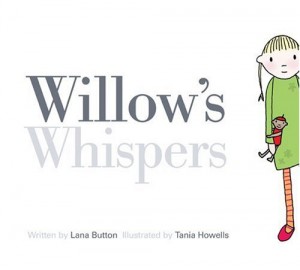Story … Narrative … Imaginative … Creative …At the beginning of your story writing unit, have students write a story and assess using a narrative quick scale (see assessment tab above for student-friendly rubrics). Use this assessment to inform your instruction. As you explicitly teach each mini-lessons like those below, assess again, providing students with descriptive feedback regarding their progress. When students see their progress on a highlighted rubric, they are motivated to continue. |
|||
| Book Title/Cover | Story Overview | Objective | Lesson Links & Black Line Masters |
 |
You are going to love this book by Bethany Barton! I sure did! Spiders can be difficult to love, but the more you know about them and the more humour that surrounds them, the more chance there is for an attraction to emerge! | Where do I begin? In this lessons, there are suggestions for outdoor learning, art, inquiry, spider research, a maker activity, checking out emotions, and some writing of course! | Writing Trait: Ideas & Voice
|
 |
Lena creates a hat for each month of the year. She carefully chooses items that fit each month. But how will she decorate her last hat? | Children will delight in noticing all the details that Lena has included in each month’s hat. After making a hat themselves, students will describe thier hat by adding lots of details to their writing. | Writing Trait: Ideas adding details |
 |
BCs core competencies and Todd Parr books just go together. | A variety of Todd Parr books are teamed with core competency messages. | Writing Trait: Ideas adding details |
 |
Bear sees colours everywhere. children are invited to see colours in their world too! | In this lesson students are invited to play with colour and begin to write colour words. Images from Pintrest are used as inspiration for playful ideas. | Writing Trait: Ideas |
 |
“Sit back, relax, stay right where you are. It’s time to reveal my spectacular car!” This rhyming book is sure to spark curiosity and fuel creativity! | Kids will use their imagination and variety of How-To-Draw books to design and label, then write about a very creative car they have imagined. Throw in some cars to play with and a trip out to the parking lot to build some car-specific vocabulary, and you’ve got a kid-friendly, playful writing lesson! | Writing Trait: Ideas (details) & Organization (beginning and ending) lesson |
 |
Charlie is babysitting Lola and must get her to eat some not-so-favourite foods. How will he manage that? | Before trying to write stories of their own, students need to hear examples of story problems and their solutions. In this lesson, students use a framewowork to guide their thinking. | Writing Trait: Ideas |
 |
Willow wants to be heard, but her tiny voice means that she is often left out. Does Willow find her voice? Read this delightful book to find out what happens. | Read Willow’s dialogue in a whisper and have a conversation about the voice trait. Students will fill out a SWBS graphic organizer to determine this story’s problem and solution. This prepares them to write stories that have all the basic parts that stories need. | Writing Trait: Ideas |
 |
Lean the book to the left. What will happen to the dots? Now try shaking it. Predict your way through this book as you hand it over to kids to rub, shake, tap and lean. Playful literacy at its best! | Don’t miss this delightful book. It’s perfect as an introduction to the Voice trait in writing and a fabulous book to share predictions. Student predictions turn into creative text alternatives. Read the attached lesson for a fun response to this book. | Writing Trait: Ideas
Press Here Class Book With Special thanks to Mary Weiler’s class at Ecole Puntledge for their examples. |
 |
Daniel Kirk’s Library Mouse is a sweet story of a mouse, turned writer, who lives in a library. When library patrons want to see who the amazing new author is, a shy mouse has an interesting solution and a warm message for our young writers! | In this lesson, children play first, then write about a mouse house they have created. The learning intention is to add deluxe details to capture the reader’s interest. | Writing Trait: Ideas
Library Mouse: Adding Deluxe Details And a sequel by the same author: |
 |
This book is perfect to launch the Somebody, Wanted, But, So story framework.
Frog wants to fly, but flying is a bird thing. When frog rescues a baby bird, flying just might become a frog thing too! |
In this link, students will once again examine the problem and solution framework of this story. | Writing Trait: Ideas |
 |
All the Dandelions are disappearing quickly, but Christopher Nibble finds one. Will he gobble it up quickly before others find it? This book has a heartwarming theme. | Students will examine the problem and solution framework of this story and others. | Writing Trait: Ideas
Christopyher Nibble SWBS (Somebody Wanted But So story framework strategy) |
 |
Missy isn’t keen on books, but with just the right book, Miss Brooks might be able to change that attitude. | In this lesson link, character flaws are examined as a way to create a problem for a story. | Writing Trait: Ideas |
 |
Follow the daily events told from the perspective of a goldfish. When living conditions become too crowded, will this goldfish enjoy his new, quiet surroundings? | In this lesson, students write diary entries pretending they are a house pet, farm or zoo animal. | Writing Traits: Voice and Ideas |
